Do you feel it? The l'air calme. Le rising heat. Le stuffy feeling that makes work harder and days longer.
Les grands espaces sont confrontés à de gros problèmes. Les entrepôts, les usines et les grands bâtiments commerciaux sont confrontés à une mauvaise circulation de l'air. Lorsque l'air ne circule pas, la chaleur s'accumule au plafond. Les travailleurs transpirent. La productivité diminue. Les équipements surchauffent. Les factures d'énergie grimpent en flèche.
These issues hit your bottom line in ways you might not even notice:
The industrial ceiling fan market, valued at USD 990.5 million in 2024, shows how many businesses face these exact issues. This market will grow to nearly USD 2 billion by 2032 as more facilities search for solutions.
Most businesses try to fix these problems by:
These band-aid fixes waste money. They do not solve the real problem. Traditional HVAC systems push cool air down, but that air quickly rises back up, creating temperature layers that leave workers in uncomfortable conditions.
Le global HVLS fan market, now at $1.28 Billion, will reach $2.3 Billion by 2033 because facility managers realize standard solutions don’t work.
Think about it: Why spend thousands extra on cooling when the air isn’t even reaching where people work?
The answer lies in Volume élevé, faible vitesse (HVLS) industrial ceiling fans. These engineering marvels move massive amounts of air while using minimal energy.
| Metric | Value |
| Économies d'énergie | Up to 30% reduction in HVAC costs |
| Dominant Blade Size | 6 Ft–12 Ft (45% market share) |
| DC Motor Efficiency | 30–70% energy savings vs. AC motors |
Ventilateurs de plafond HVLS create a gentle, whole-building air circulation pattern using large blades and powerful, efficient motors. Unlike small, high-speed fans that create narrow, turbulent airflow, HVLS fans distribute air smoothly throughout the entire space.
Le Swedish engineering behind the best HVLS fans focuses on airfoil design – the same science that helps airplanes fly. This creates a steady column of air that moves down to the floor, then spreads outward in all directions before rising back up along walls.
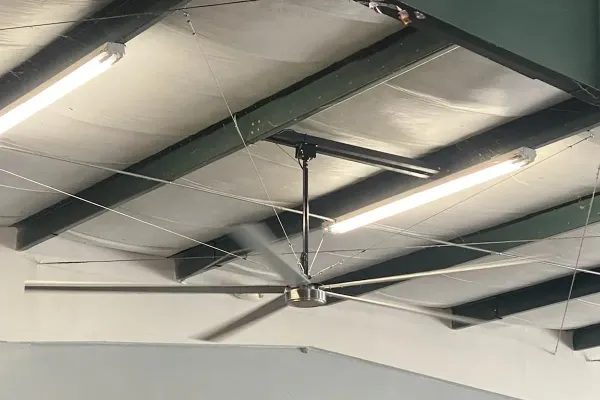
Industrial Ceiling Fans
When an industrial ceiling fan for manufacturing works correctly, it creates what engineers call “destratification” – breaking up those temperature layers that trap heat at ceiling level.
Here’s how HVLS fans change your space:
The market for these industrial HVLS fans shows impressive growth, from USD 500 Million in 2024 to a projected USD 1.2 Billion by 2033, growing at 10.5% annually. This rapid adoption shows how well these solutions work.
Different settings see different benefits from industrial ceiling fans:
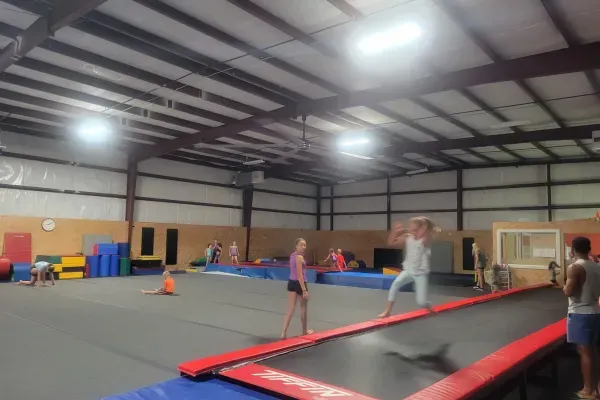
HVLS FAN IN GYM
Un big commercial ceiling fan can circulate air in up to 20,000 square feet, replacing 10-20 small fans while using far less energy. This explains why the dominant industrial fan size (6-12 feet) holds 45% of market share.
When selecting an HVLS fan, quality matters. The best industrial ceiling fans share key features:
The most trusted manufacturers combine these features with rigorous testing and strong warranties. That’s why the best HVLS fans come from companies with dedicated engineering teams who understand fluid dynamics and commercial building needs.
In a market growing to $10.54 billion by 2031, quality varies widely between manufacturers. The best industrial ceiling fan companies:
Companies with Swedish engineering principles tend to emphasize these qualities, creating fans that combine impressive performance with remarkable energy efficiency.
Adding Ventilateurs HVLS pour entrepôts involves much more than hanging a fan from the ceiling. Here’s the proper process:
The right manufacturer partners with you through this entire process, not just selling you equipment and disappearing.
Installation & Maintenance Guide
A 100,000 square foot distribution center in Texas installed six 24-foot HVLS fans to replace 34 high-speed fans. The results were impressive:
With energy costs continuing to rise, investments in HVLS fans typically pay for themselves in 6-18 months through reduced utility bills alone.
Modern industrial ceiling fans deliver environmental benefits beyond energy savings:
As sustainability becomes more important to businesses, high volume low speed fans for commercial spaces represent an easy way to make meaningful environmental improvements while also saving money.
To select the perfect fan for your facility:
Remember that the largest segment of the market focuses on 6-12 foot fans, which make up 45% of all industrial fans sold. This size range works well for most commercial applications.
Even the best Ventilateurs de plafond extérieurs HVLS won’t perform properly without correct installation. Professional installation ensures:
When evaluating fan providers, always ask about their installation process and the qualifications of their installation teams.

Installation & Maintenance Guide
As the industrial fan market grows toward $2.8 billion by 2033, innovations continue to improve performance. Look for these emerging trends:
The most forward-thinking manufacturers are already developing these technologies, with HVLS fan manufacturers from Sweden leading many innovations.
If your facility struggles with air circulation, temperature management, or high energy costs, industrial ceiling fans offer a proven solution. The growing market – from $990.5 million currently to $2 billion by 2032 – shows how many businesses are discovering these benefits.
Here’s how to get started:
The best industrial ceiling fan providers will help you through this process, focusing on solving your specific air movement challenges rather than just selling equipment.
Poor air circulation in large spaces isn’t just uncomfortable—it costs money through wasted energy, reduced productivity, and potential product damage. Industrial ceiling fans, especially HVLS models, offer a proven solution that pays for itself through improved efficiency.
With the market growing at 5.9% annually, more facilities discover these benefits every day. The growing adoption of DC motor fans, which save 30-70% energy compared to traditional motors, shows how technology continues to improve these systems.
Don’t let stagnant air hold your facility back. The right quietest industrial fan can transform your space, creating a more comfoable, productive, and efficient environment for both workers and operations.
Whether you manage a warehouse, factory, gym, or commercial building, industrirtal ceiling fans provide an elegant solution to complex air movement challenges—using less energy while delivering better results.
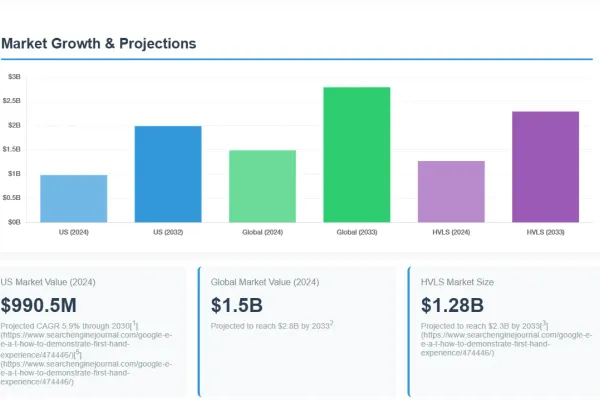
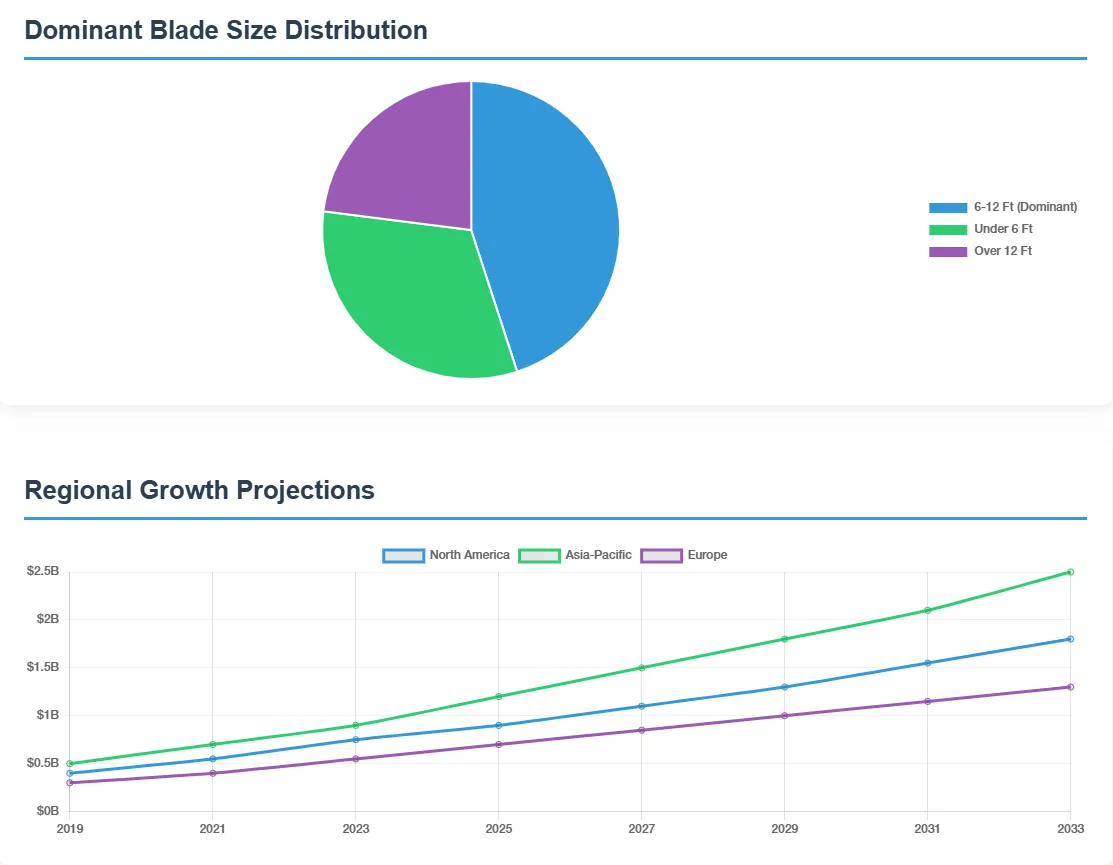
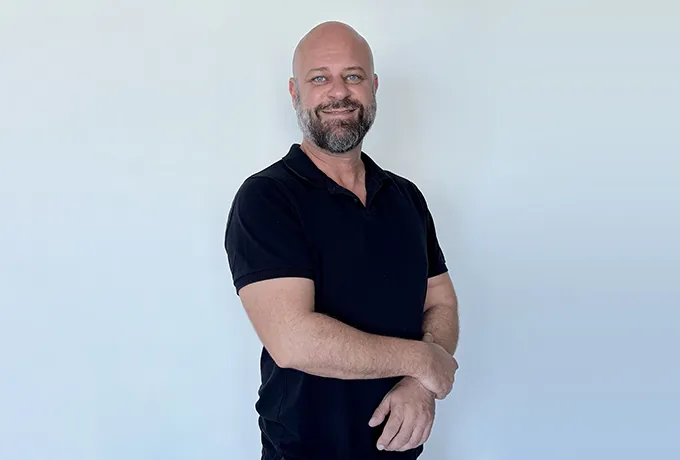
Salut, je suis Michael Danielsson, PDG de Vindus Fans, avec plus de 15 ans d'expérience dans le secteur de l'ingénierie et de la conception. Je suis ici pour partager ce que j'ai appris. Si vous avez des questions, n'hésitez pas à me contacter à tout moment. Grandissons ensemble !